Lucca is a pleasant and welcoming city, whose beautiful historic center, clean and orderly, is protected by a vast 16th century enclosure. Among its must-see places, the Piazza dell’Anfiteatro recalls the Roman past of the city having kept the physiognomy of the ancient building. Other beautiful squares are in front of the remarkable churches including the Saint Martin Cathedral, San Michele in Foro and San Ferdiano. It has also preserved some pretty medieval towers that can be visited to reach their terraces offering panoramic views of the roofs. The Museum of Palazzo Mansi houses the main art gallery in Lucca, while that of Villa Guinigi documents the history of the city, while the Puccini house-museum is dedicated to the famous composer, native of the place.
Read also the general presentation of
Lucca
If you see this after your page is loaded completely, leafletJS files are missing.
Piazza dell’Anfiteatro in Lucca
Near the Porta Santa Maria, northern entrance of Lucca, the Piazza dell’Anfiteatro is a vast elliptical square, corresponding precisely to the Roman amphitheatre that was there. Built in 1800, it is undoubtedly the most charming of the city’s squares, with Piazza Napoleone being the largest. Its atmosphere is soft and pleasant, with the yellow and orange light facades of the houses, in front of which are installed the terraces of the restaurants. It is accessed by one of the four small vaulted passages.
Some Roman remains can be seen inside shops around the square and a market is held there every week.
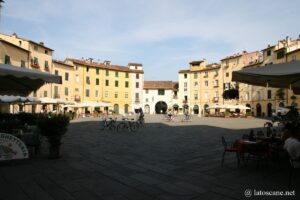
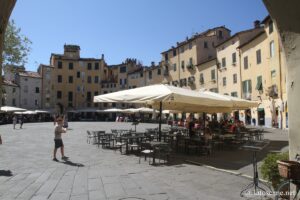
St Martin’s Cathedral of Lucca
The superb St Martin’s Cathedral of Lucca (Duomo di San Martino in Italian) is a remarkable example of Romanesque and Gothic architecture from the Renaissance, built mainly between the late 11th century and until the 17th.
Its superb façade in polychrome marbles is inspired by that of Pisa, and surprises with its lack of symmetry. The portico has rich reliefs, with scenes from the life of Saint Martin or a curious labyrinth.
The Gothic interior is grandiose, preserving several masterpieces, in particular the marble Monument of Ilaria del Carretto carved by Jacopo della Quercia, a very old wooden crucifix, or the nearby Cathedral Museum.
→ Read also the page St Martin’s cathedral of Lucca
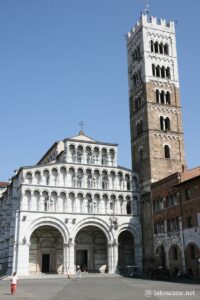
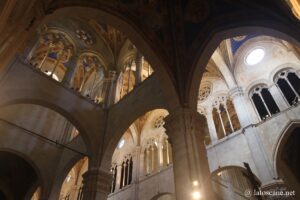
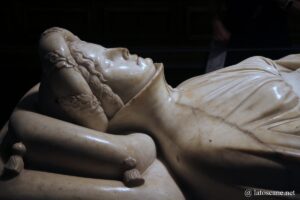
San Michele in Foro church
Among the beautiful churches of Lucca, the dazzling San Michele in Foro (St Michael in Forum in English) stands out with its Romanesque-Gothic style inspired by that of Pisa. Attested in 795, the current building was built where the Roman Forum was from 1079 with Pope Alexander II, and until the fourteenth century.
Its high facade is striking with its wealth of sculptures, including its loggias in height, and surmounted by the statue of the archangel Saint-Michel hitting the dragon to kill it.
The central nave is supported by arcades supported by monolithic columns, and the building is covered with barrel vaults.
It houses important works, such as a Madonna with Child in terracotta by Luca della Robbia, the Magrini retable by Filippino Lippi with the four saints, etc.
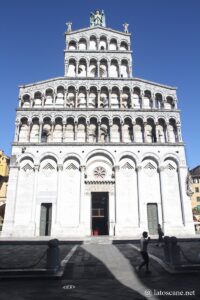
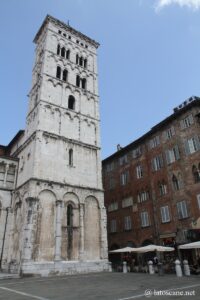
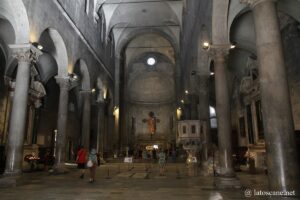
Basilica di San Frediano church
Another monumental building in Lucca, the Basilica di San Frediano is more austere than the churches mentioned above. Its origin would go back to the sixth century with Fridian, who was an Irish hermit and then bishop of Lucca between 560 and 588.
It is immediately noticeable with the large mosaic on the top of its facade, dating from the end of the thirteenth century, a rare element on a Romanesque building. With its Byzantine style, it represents an Ascension of Jesus, carried by two angels and the apostles.
The three naves are divided by two beautiful colonnades. It preserves the remains of Saint Zita, co-patron of Lucca, as well as beautiful 12th century baptismal font that represent stories of Moses, the apostles, etc. The Sant’Agostino Chapel has frescoes from the 16th century and that of the Tenta family has works by Jacopo della Quercia.
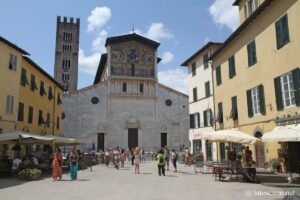
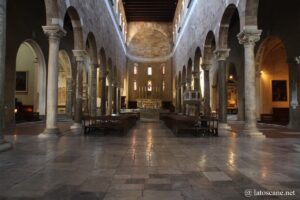
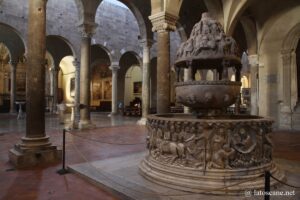
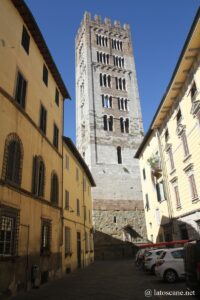
Lucca Towers
One of the best things to do in Lucca is to climb one or more of its medieval towers that are accessible to the public. In the Middle Ages, there were almost 250 of them in the city, and now there are only a few, mainly two not to mention the bell towers.
Guinigi Tower
Like other towers, the Guinigi Tower was built by a powerful merchant family in the 15th century, rising to 45 metres. It is noticeable and stands out with its original small grove that grows on its terrace, a garden with 7 oaks. You can climb the 230 steps to enjoy the best view on the rooftops of Lucca.
Clock Tower
The Torre delle Ore (Tower of the hours in English) is another of the towers that can be climbed. With its 50 meters, it is the highest tower in Lucca, with its 207 wooden steps. It is notable for its large 18th century clock, which has kept its mechanism and is always hand-wound.
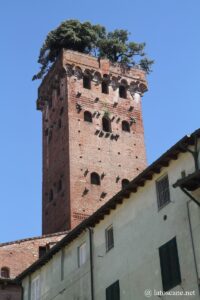
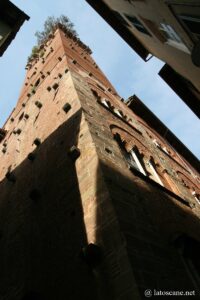
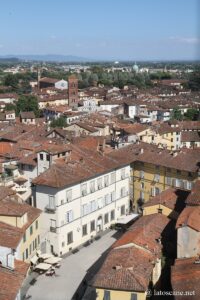
Churches of Lucca
Santi Giovanni e Reparata
Near the present cathedral, the Monumental and Archaeological Complex of the church of Saints Giovanni and Reparata (Saints John and Reparata in English), is notably the site of the ancient Lucca cathedral, and remains dating back to the Romans.
The current church has a facade rebuilt in the seventeenth century, with a portal of the twelfth century which is one of the few remains of the previous church.
The interior has retained its medieval structure and elements from various periods, such as 17th century frescoes and furniture. You can admire the St Ignatius Chapel, a late 17th century baroque masterpiece, or a Roman sarcophagus dating from the 2nd century AD.
Under the church and baptistery, the archaeological area is equipped with walkways crossing the remains of the old cathedral. These remains document the evolution of the city from Roman antiquity, including a republican domus from the 2nd century BCE until the Middle Ages.
The ticket allows you to visit the church and baptistery, the bell tower, archaeological excavations, the nearby cathedral and its bell tower.
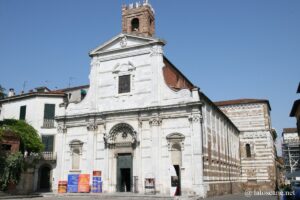
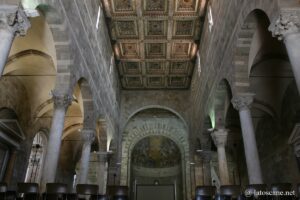
St Francis church of Lucca
The Saint Francis (Chiesa di San Francesco in Italian) was restored in 2013, now sacralized and hosting events. The complex is now integrated into the campus of the IMT school.
It was an important place of worship in Lucca, where the 3 cloisters served for crops, plants and vegetables. Besides the church it includes the Guinigi Chapel, the sacristy, and various rooms and accommodations.
Built by the Franciscans, the church was completed in the 15th century. The façade remained unfinished until 1930. It is characterized by a rose window and four arms: franciscans, bundle of lictor, city of Lucca and a rampant lion. Inside, the single nave has altars on the sides of the walls decorated with frescoes, three apses with two chapels one of which with the remains of paintings by Baldassarre di Biagio. Several people from the city were buried there.
Santa Giulia Church
This small Lombard church origin is dedicated to the Christian martyr Saint Julia, probably dating back to the early 7th century. It was rebuilt in the 13th century, covered with marble in the 14th century.
Its sober Romanesque façade was subsequently decorated with Gothic elements. On the side arches are small sculptures of female busts with elongated neck.
The high altar dates from the 17th century, with the relics of the saint who arrived from the island of Gorgon in Brescia in the 13th century.
Santa Maria della Rosa Church
The small church Santa Maria della Rosa was built around 1300 as an oratory dedicated to the “Madonna tra i Santi Pietro e Paolo”. A subsequent modification of one side gave it its particular Gothic aspect. The inner wall on the west side is based on the surviving portion of the Roman walls of Lucca.
The facade dates from the 15th century, and was designed by Matteo Civitali. The interior was designed especially in the fifteenth century with its columns and vaults. The main altar houses the precious icon of the 14th century Madonna della Rosa.
Santa Maria Forisportam Church
The church of Santa Maria Bianca was originally named Santa Maria Forisportam, because just outside the Roman walls, “bianca” for its white limestone. The square is also called Piazza della Colonna Mozza, because there is an ancient Roman column.
It was rebuilt in the 13th century, with an interesting unfinished façade of Roman Lucchese style, modified from the 16th to 18th centuries with a brick elevation.
The interior retains some elements of the Roman era and medieval columns and capitals. Two 16th-century works by Guercino are also on display: Saint Lucia and the Assumption between Saint Francis and Saint Alexander.
A chapel preserves the tomb of Chiara Matraini, one of the few Renaissance poets.
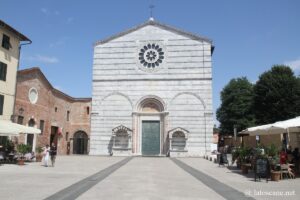
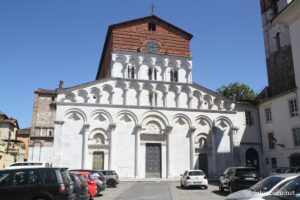
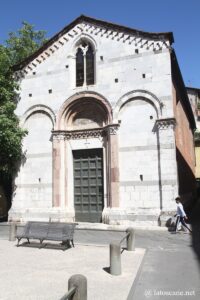
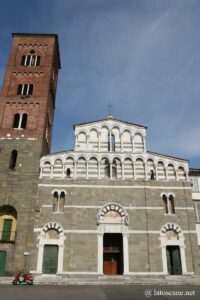
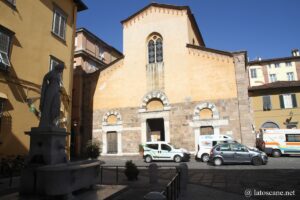
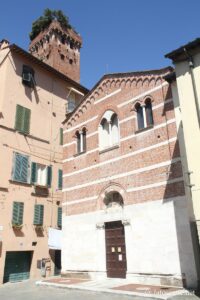
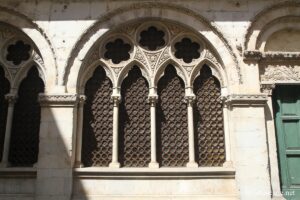
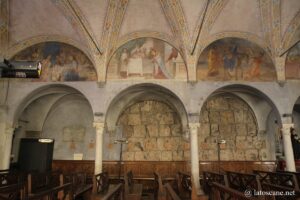
Other churches
San Pietro Somaldi
The San Pietro Somaldi church is named after Sumualdo, the Lombard founder of the church in 763. It was rebuilt in the late 12th century and completed in the 14th. The 13th-century façade is typical of Lucca, with a beautiful portal. It preserves the 17th century organ played by Giacomo Puccini.
Lucca Walls
At first glance, the Renaissance and modern walls of Lucca are not particularly noticeable, but they come closer to them, with a moderate height of 12 metres, a width of 30 metres, and above all a great length of 4 km around the historic centre. These ramparts are very large and powerful, built from 1504 to 1645 at the initiative of Alexander Farnese. Nowadays its surroundings are landscaped with a high promenade, and tree alleys.
Never having had the opportunity to face an attack, these walls are very well preserved, including monumental entrances with their underground and gunboats. They are the only defensive walls of the modern era of the region intact.
In the historic centre of Lucca you can also discover the remains of the medieval walls and the gates of the time. The Roman walls are only a few portions, as in the church of Santa Maria della Rosa.
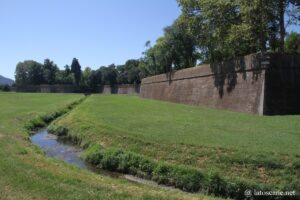
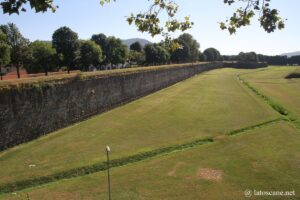
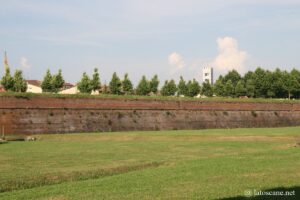
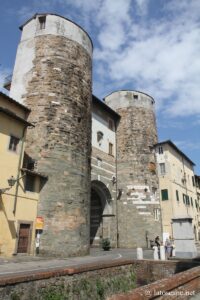
Streets and squares in the historic centre
Via Fillungo is a large street crossing Lucca, with its shops including historic signs preserved despite changes in the destination of the shops.
Piazza San Michele is one of the most beautiful squares in the city, apart from the presence of the grandiose Romanesque church, also called Piazza delle catene (square of the chains in English) because of the chains connecting the marble columns. Next to the church, the 12th century bell tower was later reduced in height. It is surrounded by medieval buildings with arches and mullioned windows, the Palazzo Pretoriano which is a beautiful example of Renaissance in Lucca. In the centre of the square, a statue of Francesco Burlamacchi was placed in 1863.
The Pupparona Fountain in Piazza San Salvatore is a beautiful marble sculpture, with a statue of a Naiad resting on an amphora on a pedestal, and a pond adorned with lion heads.
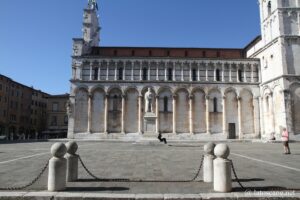
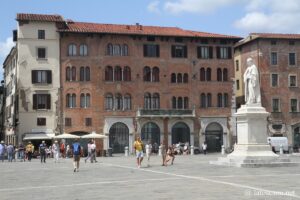
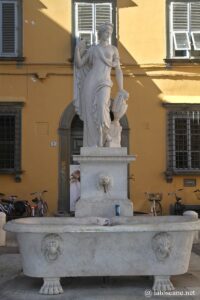
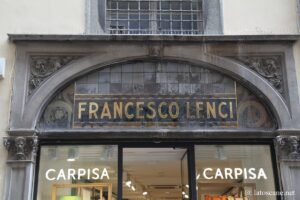
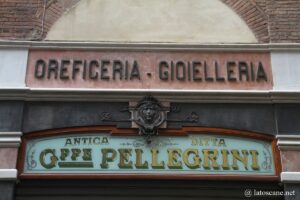
Via del Fosso is characteristic with its canal, originally a defensive ditch, which divides it in length in two, then used by dyers.
Piazza di Santa Maria Foris Portam, where stands the homonymous church now called Santa Maria Bianca, is distinguished by the Roman column (reduced in size) that served during the medieval period of the city’s palio.
The Piazza Cittadella is opposite the Puccini house-museum, with a bronze statue in the centre of the building showing him sitting there smoking a cigarette.
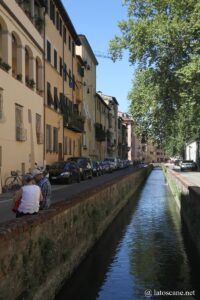
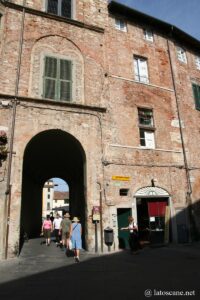
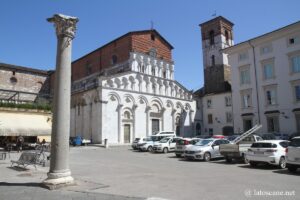
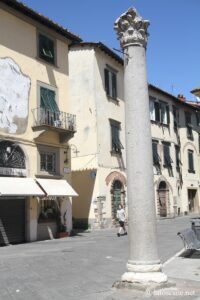
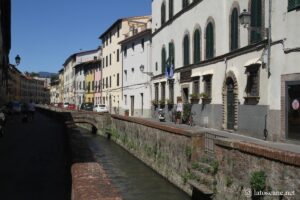
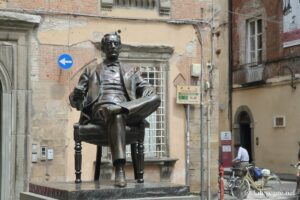
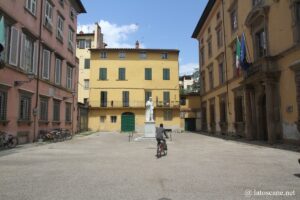
Villa Guinigi National Museum
The beautiful National Museum of Villa Guinigi retraces the entire history of Lucca and its territory through its remarkable collection of works of art.
It is housed in the 15th century noble palace built by Paolo Guinigi, then lord of Lucca.
The central core are mainly religious works from the early middle ages to the 18th century, documenting the evolution of figuration with artists from Lucca or elsewhere who came to answer ecclesiastical and secular orders.
There is also an important archaeological section documenting the occupation of the territory since prehistory, a section and wood sculptures of the 15th century, etc.
Let us mention some masters whose realization can be admired, like sculpture with Donatello and Matteo Civitali, painting with Fra Bartolomeo, Vasari, Paolini, Aretino, Guido Reni, etc.
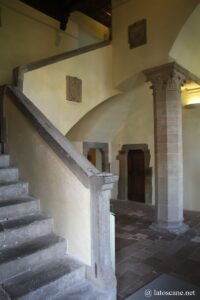
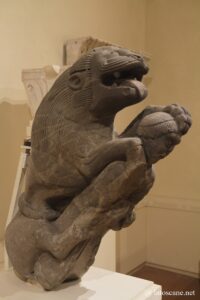
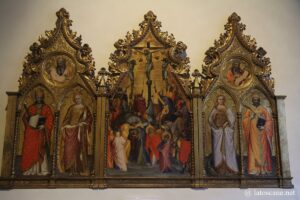
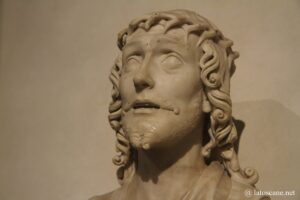
Mansi Palace National Museum
The Mansi Palace is a 17th century palace, witness to the splendour of Lucca at that time with its rich merchants, in this case the Mansi. It houses the National Museum, with the richest pinacoteca of the city.
The palace itself is not without interest, decorated for example with a fresco by Van Dick or furniture from the 18th century.
The gallery gathers nearly a hundred works, the core of which was offered to the city in 1847 by the grand duke Peter Leopold II when Lucca was annexed to the Grand Duchy of Tuscany. In its four rooms, you can admire works by Beccafumi and Tintoretto. A room is dedicated to portraits of the Medici family, including the famous Portrait of the young man from Pontormo representing Alexander de Medici. The fourth counts some French and Flemish paintings.
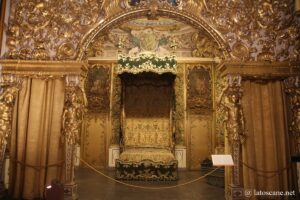
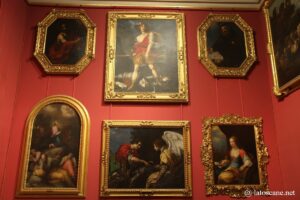
Piazza Napoleone and the Ducal Palace
The Piazza Napoleone is the largest square in Lucca and takes its name from Elisa Bonaparte, Napoleon’s younger sister who ruled the principality of Lucca from 1806 onwards and who commissioned the architect Lazzarini to design this space. destroying various buildings including a church, in order to enhance the ducal palace. Here was originally the fortress Augusta, now the citadel of Lucca. Originally the statue of Napoleon probably adorned the square, replaced by that of Marie-Louise de Bourbon, regent of the duchy of Tuscany after the fall of the French empire.
The Doge’s Palace is now the seat of the Province of Lucca.
Giacomo Puccini’s House-Museum
This house-museum is the one where the famous composer Giacomo Puccini was born in December 1858. It is an elegant palace, where photos, furniture, posters of the time, scores, objects, the piano Steinway, etc.
Lucca’s history is linked to that of the Puccini family, composers and musicians. Giacomo Puccini himself bought the palace that had been sold by his parents, after the success of his opera.
The composer, author of Tosca, Turandot and Madama Butterfly, can be traced back to his life.
Pfanner Palace
The Palazzo Pfanner is a historic 17th century Baroque style house with its charming Italian garden by Filippo Juvarra.
The monumental staircase and garden were the setting for several cult films such as Il Marchese del Grillo by Mario Monicelli and The Portrait of a Lady by Jane Campion with Nicole Kidman.
Acquired in 1846 by the Pfanners, they established one of the first breweries in Italy.
Botanical Garden of Lucca
Located to the south-east of the historic centre, the botanical garden was created in 1813 by the Faculty of Medicine, which conserves a 22 metre high cedar from Lebanon planted in 1822 with a circumference of over 6 metres. The arboretum contains more than 200 species including trees, shrubs, rhododendrons and camellias, greenhouses and the Botanical Museum.
Photo Gallery
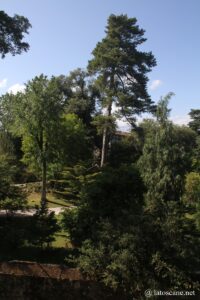
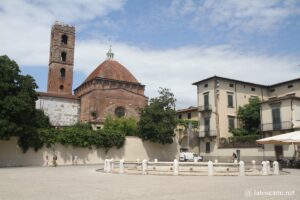
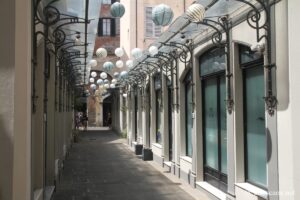
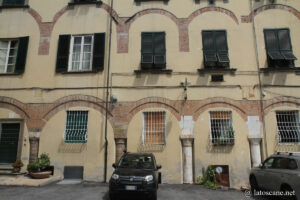
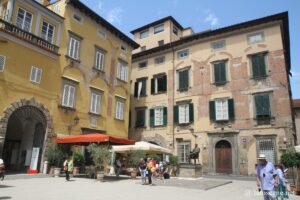
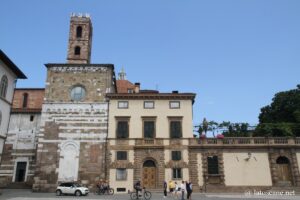
Villa Marlia
Located 8 km north of Lucca in the municipality of Capannori, the Real Villa Marlia is a remarkable historical palace with an exceptional park. Napoleon’s sister Elisa Baciocchi was installed there as the sovereign of Lucca, then of all Tuscany. It renovates the former Renaissance palace of the Orsetti family by giving it its current neoclassical appearance and expanding the park.
The estate now covers 16 hectares, with the Villa Reale, the Palazzina dell’Orologio, the Villa del Vescovo and especially the beautiful park dating back to the 17th century. This one with various ornaments and constructions like the Teatro di Verzura with its hedges of yeasts, the Garden of Lemons, the Italian Garden and the Theater of Water with the great basin and its statues and cascades, etc.
Surroundings of Lucca
Torre del Lago
Village in the municipality of Viareggio, almost 30 minutes from Lucca, Torre del Lago was particularly frequented by Giacomo Puccini and his friends artists, where today the Festival Puccini is held, one of the most important opera festivals in Italy in July and August.
There is the Puccini house-museum, the lake of Massaciuccoli in a natural area, as well as a large sandy beach with establishments.
Altopascio
Charming village located on the route of the Via Francigena in the Plain of Lucca, Altopascio is renowned for its bread since centuries and frequented by pilgrims.
The historic centre preserves remarkable ancient buildings, such as the beautiful Piazza degli Ospitalieri with its old well, the church of San Jacopo from the 12th century when it was under the Hospitallers, accompanied by the powerful Romanesque bell tower from the end of the 13th century. Next to the church, the Spedale di Altopascio (Hospital of Altopascio) founded by the hospitallers (the Knights of Tau in this case) in the eleventh century assisted pilgrims. On the nearby Piazza Garibaldi, the 15th-century Loggiato houses a historical collection documenting the history of Altopascio.
Porcari
Located in the plain of Lucca on the Via Francigena, Porcari dates back to an 18th-century Lombard castrum. It is an important paper production centre.
Its white marble San Giusto church dominates the village, accompanied by its powerful bell tower. Higher up on the hill, the Torretta is a site with the remains of a watchtower that dominates the whole landscape over the plain of Lucca.
In the village, Lazzareschi Foundation is a building of contemporary architecture dedicated to exhibitions and cultural events.
In the locality of Piana delle cento fattorie, the archaeological site of Fossa Nera reveals vestiges of occupations from the Bronze Age, as well as Etruscan and Roman.
Nozzano
Nozzano is a small medieval village in the plain of Lucca (west of Lucca), particularly evocative, in a pretty site dominated by its castle.
The fortified town has an elliptical structure protected by a 12th century enclosure with towers and an access gate. The Nozzano Castle, a beautiful triangular fortification, is a reconstruction from the late fourteenth century.
The site near the territory of Pisa defended that of Lucca and controlled the river Serchio.
Other sites
- Lucchio is a mysterious, perched village between the walls of the mountains.
- In the Garfagnana : the Devil’s Bridge in the Serchio valley, the Chain Bridge and the spa town of Bagni di Lucca, the stone mill village of Fabbriche di Vergemoli, the Verrucole fortress and its medieval Archeopark, etc.
- The 3.2 km long Nottolini Aqueduct with 459 arches and two tanks.
- The Val di Nievole including Collodi the city of Pinocchio, the Pinocchio’s Oak, or Oak of the Witches, in Capannori, tree of more than 4 meters of circumference, appearing much wider than high.
Montecarlo is an ancient medieval village characterized by its well-preserved walls and fortress. - The Villas of the Plain of Lucca (Piana di Lucca in Italian)
Many prestigious villas around Lucca have beautiful gardens with water games in particular.- The Villa Torrigiani in Camigliano is the finest example of preserved baroque villa in the area around Lucca, with one of the “most beautiful gardens in Italy”, a cypress valley of almost one kilometer. Originally owned by the Buonvisi, it was bought in the 17th century by Nicolao Santini, ambassador of Lucca to the court of Louis XIV in France
- The Villa Mansi in Segromigno, bought by the Mansis in 1675.
- The Villa Marlia is a remarkable palace that was the residence of Elisa Bonaparte Baciocchi who had it renovated, with its neoclassical forms.
- Other villas: Villa Oliva and Villa Grabau in San Pancrazio di Marlia and Villa Bernardini in Vicopelago.
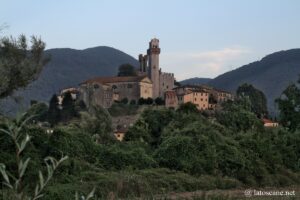
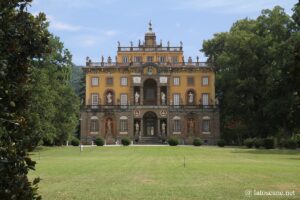
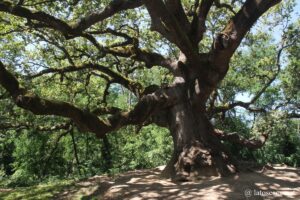
Touristic map of Lucca
If you see this after your page is loaded completely, leafletJS files are missing.
Links and sources
- Municipal touristic gate : www.turismo.lucca.it
- Portails touristiques, blogs : www.visittuscany.com, mysocialwanderlust.com
Posts about Lucca
- Lucca in Tuscany
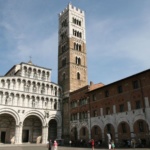 Lucca is undoubtedly one of the most beautiful and pleasant towns in Tuscany, a stop not to be missed during a route through the region. Although it can be visited ...
Lucca is undoubtedly one of the most beautiful and pleasant towns in Tuscany, a stop not to be missed during a route through the region. Although it can be visited ... - Collodi and Val di Nievole
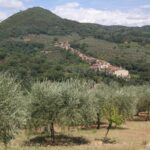 Between Lucca and Pistoia, the Val di Nievole is a gentle region full of small treasures and gardens, from its spas to its natural areas, with lush hills, woods of ...
Between Lucca and Pistoia, the Val di Nievole is a gentle region full of small treasures and gardens, from its spas to its natural areas, with lush hills, woods of ... - Versilia in Tuscany
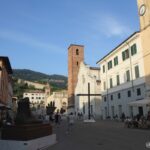 The Versilia is a strip of territory in northern Tuscany, bordering the coast for almost 20 km, between its long sandy beaches to the west and the seaside coast, and ...
The Versilia is a strip of territory in northern Tuscany, bordering the coast for almost 20 km, between its long sandy beaches to the west and the seaside coast, and ... - Lucca Cathedral
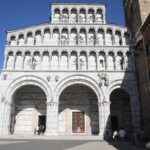 The superb Lucca Cathedral (In Italian: Duomo di San Martino) is a remarkable example of Romanesque Renaissance architecture. Its construction would go back to the end of the 6th century ...
The superb Lucca Cathedral (In Italian: Duomo di San Martino) is a remarkable example of Romanesque Renaissance architecture. Its construction would go back to the end of the 6th century ... - Hotels in Lucca
 Find and book accommodation in Lucca and its surroundings quickly among more than 300 structures, including hotels, bed and breakfast, apartments, etc
Find and book accommodation in Lucca and its surroundings quickly among more than 300 structures, including hotels, bed and breakfast, apartments, etc - Visits and guided tours in Lucca and around
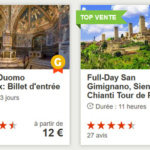 Selection of guided tours, activities and sites to discover in Lucca and its surroundings in Tuscany Into the same category
Selection of guided tours, activities and sites to discover in Lucca and its surroundings in Tuscany Into the same category - Weather in Lucca
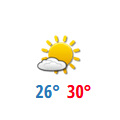 Weather forecast in Lucca, Tuscany, today and the next days, temperature, rainfall, etc Weather 5 days in Lucca Weather forecast in Lucca Into the same category
Weather forecast in Lucca, Tuscany, today and the next days, temperature, rainfall, etc Weather 5 days in Lucca Weather forecast in Lucca Into the same category
No Comments Yet